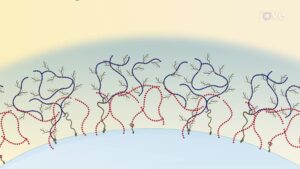Cardio has long been promoted as a cornerstone of fat loss. From treadmill sessions to high-intensity intervals, the message often repeated online is that “more cardio equals more results.” But is this actually true? Evidence shows that excessive cardio can sabotage weight loss, slow your metabolism, and leave you with less muscle mass than before. The key is balance: understanding how much cardio supports health and fat loss versus how much may be counterproductive.
Why Cardio Is Important for Health
Cardiovascular exercise offers undeniable health benefits. Regular cardio improves heart function, circulation, lung capacity, and endurance. It can lower the risk of chronic diseases such as cardiovascular disease, type 2 diabetes, and hypertension [CDC]. Activities as simple as walking, cycling, or climbing stairs provide meaningful boosts to overall health and quality of life.
However, health benefits do not always translate into accelerated fat loss. In fact, when cardio is used excessively, it may trigger negative metabolic and body composition effects.
How Too Much Cardio Can Backfire
Excessive cardio—such as daily 45+ minute treadmill sessions combined with very low-calorie diets—can stress the body in ways that slow down fat loss. This happens for several reasons:
- Metabolic slowdown: Prolonged calorie restriction plus cardio lowers metabolic rate, forcing the body to conserve energy rather than burn fat efficiently.
- Muscle breakdown: Without strength training and adequate nutrition, the body may break down muscle for fuel, resulting in a “skinny fat” appearance.
- Increased fat storage: When deprived of calories, the body adapts by holding onto fat reserves, making fat loss harder over time.
- Hormonal disruption: Chronic overtraining can negatively impact hormones such as leptin, ghrelin, and thyroid function, all of which regulate hunger and metabolism [PubMed].
Understanding the “Skinny Fat” Phenomenon
One of the most common outcomes of excessive cardio combined with a poor diet is the “skinny fat” look—low overall body weight but high body fat percentage with little muscle tone. This happens when fat is lost without maintaining or building lean muscle. Cardio without resistance training cannot provide the stimulus needed to preserve muscle tissue during weight loss.
Muscle is metabolically active tissue. Every pound of muscle increases daily calorie burn and improves body composition. Without it, weight loss often results in a smaller but less healthy physique, making it harder to sustain results long term.
Why Strength Training Should Come First
Research consistently supports resistance training as the most effective exercise for fat loss and body composition improvement. Strength training helps build lean muscle, boosts metabolism, and improves insulin sensitivity. In contrast, cardio should be considered supportive rather than primary. The most effective programs prioritize weightlifting and use cardio as a secondary tool.
“Every pound of muscle is precious. Building and maintaining lean tissue should be the foundation of any fat loss program.”
How Much Cardio Is Enough?
The optimal amount of cardio depends on individual goals, fitness levels, and overall health. For the average person trying to lose fat sustainably:
- Moderate cardio: 20–30 minutes, 2–4 times per week.
- Walking and light activity: Daily movement such as walking outdoors can provide health benefits without overtaxing the body.
- HIIT sparingly: High-intensity interval training is effective for improving cardiovascular fitness and burning fat, but overuse can lead to burnout or injury.
Elite athletes or physique competitors may use cardio strategically for short-term goals, but those approaches are neither sustainable nor advisable for the general population.
The Role of Diet in Weight Loss
No amount of cardio can outrun a poor diet. Highly processed foods, sugary beverages, and extreme caloric restriction all interfere with sustainable fat loss. Whole foods, balanced macronutrients, and adequate protein intake provide the foundation for effective body recomposition.
Instead of crash dieting on 1,000 calories per day, a better long-term approach is to eat sufficient calories from nutrient-dense foods while incorporating strength training. This keeps hormones stable, preserves muscle, and supports a steady decrease in body fat.
Why Patience Is Essential
Many people turn to aggressive cardio and restrictive dieting because they want rapid results. Unfortunately, fat loss does not happen overnight. Just as it may have taken years to gain weight, healthy weight loss can take months or years to fully achieve. Consistency with sustainable exercise and nutrition habits is far more effective than quick fixes.
Building a Sustainable Routine
For long-term success, balance is everything. A sustainable fat loss routine should include:
- Strength training at least 2–4 times per week
- Moderate cardio or daily walking for overall health
- A nutrient-rich diet with adequate calories and protein
- Plenty of sleep, stress management, and recovery
This balanced approach allows for fat loss without the metabolic damage and frustration that comes from over-relying on cardio.
Video Summary
For more evidence-based nutrition and fitness tips, subscribe to our channel: https://www.youtube.com/@Vitality-and-Wellness
Looking for extra help with your fitness goals in the northern NV area? Check out the personalized Nutrition Program at Parkway Athletic Club: parkwayathleticclub.com/nutrition
Disclaimer: This content is for educational purposes and does not replace personalized medical advice.



